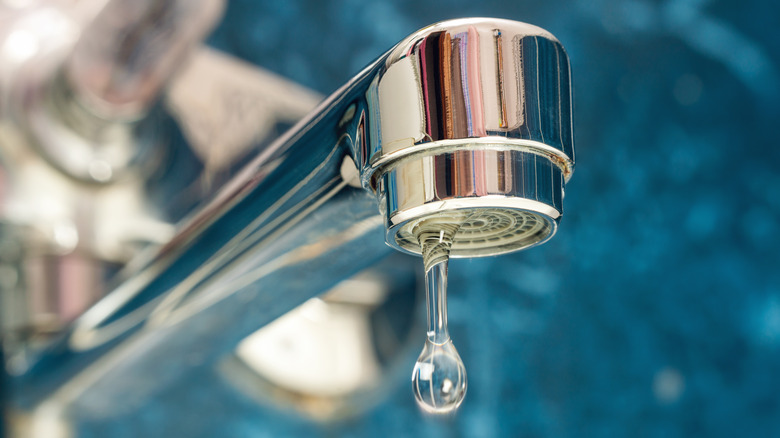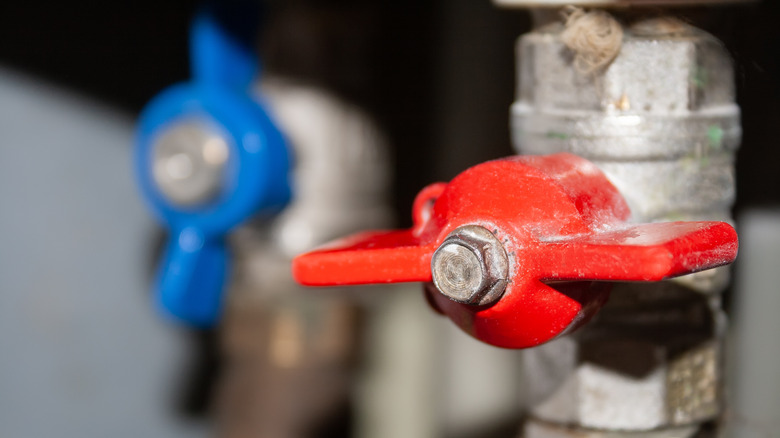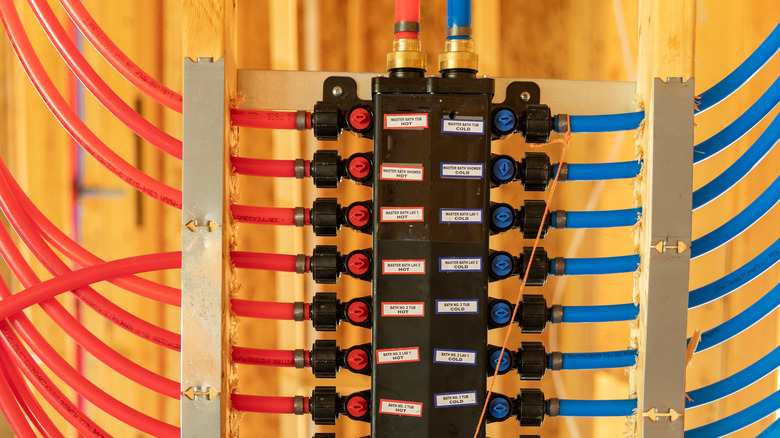Don't Make This Big Mistake When Dripping Faucets To Prevent Freezing
You know the routine already, especially if you live in an older house or one that isn't insulated as well in certain areas. When expecting an unusually cold night, leave a faucet dripping to prevent your pipes from freezing and potentially costly repairs to a burst pipe. But that's only part of the story. There are other things to keep in mind when you do the dripping faucet trick, and there's a good chance you're neglecting the most important one: dripping both the cold and hot water lines.
The oversight might come from a few sources. Often, advice to leave a faucet dripping is phrased confusingly. The American Red Cross says to "let the cold water drip from the faucet served by exposed pipes." What this means is letting the water that's getting increasingly cold in the pipes drip, not that you should only drip cold water lines. The understandable belief that a hot water line is unlikely to freeze also contributes. But if water in a hot-water line sits overnight in a relatively unprotected area, it can certainly freeze as well. This can happen to exposed pipes in a garage, for example, or to pipes running through an insufficiently insulated crawlspace. Of course, if you turn off your heat because you're out of town, or for some other reason, your entire plumbing system could be considered exposed — and your burst frozen pipes might not be covered by homeowners' insurance.
Choosing a faucet & making sure both hot and cold are dripping
It seems straightforward, but in practice, it can sometimes be difficult to tell if both water lines are dripping, especially when working with a single-handed fixture. The idea is to make sure one is dripping and then add the other. So, for example, if you start with the hot water line, you should allow hot water (only) to run until it won't get any hotter, and then reduce that flow to a slow drip. This drip should at least be warm, so now add cold (or reposition the single lever closer to the cold side) to have a slightly faster and slightly cooler drip.
But first, you need to decide which faucet to leave dripping, which gets a little tricky as well. Generally speaking, you want to use the faucet at the farthest point from where your main water line comes into the house to protect the entire length of the water line. However, if that faucet is served by water lines in an interior wall, which is protected by your home's heating system, it might make sense to use the faucet served by plumbing that's on an exterior wall or otherwise runs through exposed pipes. And it turns out that there are circumstances in which you might reasonably choose to leave more faucets dripping — or none at all.
When to leave all (or none) of your faucets dripping
While a dripping faucet might work in mild conditions, it won't necessarily stop extremely low temperatures from freezing the water in your pipes. But another benefit of the dripping faucet comes from giving excess pressure a place to go. Otherwise, the freezing water expands and can easily cause copper, PVC, and CPVC joints to fail or pipes to burst. Cross-linked polyethylene (PEX) plumbing might fail at the joints, but the pipe itself can expand as much as three times its usual size without breaking. So, if you have PEX, you might be more likely to skip the drip.
Some municipalities and local water authorities actually advise against dripping. For example, Houston's Office of Emergency Management in Texas has advised residents to not leave faucets dripping, according to local TV station KHOU, because it can cause the city's water pressure to drop, creating water and fire safety issues.
And there's at least one circumstance in which you might want to leave many, or even all, of your faucets dripping. Manifold plumbing systems are designed so that every cold and hot outlet in a house is "home-run" all the way back to a distribution manifold, usually near the water heater. Because of this design, leaving one faucet dripping would only affect the lines feeding that single outlet. If all of the pipes in a manifold system are exposed, it might make sense to leave more faucets dripping to protect more water lines.


